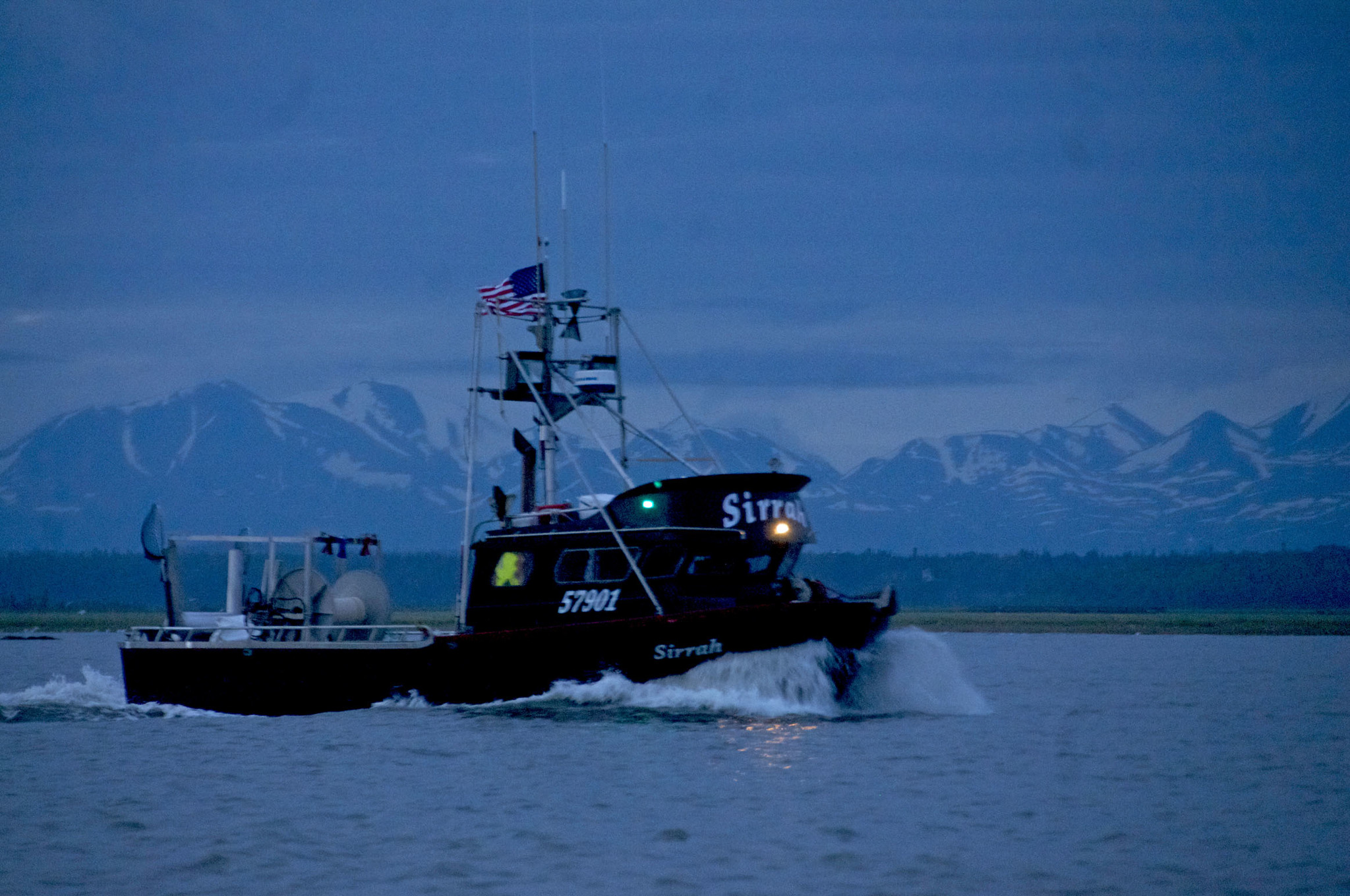A Cook Inlet salmon plan will take a lot more work from federal managers in the next few years.
The United Cook Inlet Drift Association, an industry group of salmon drift netters, has requested the U.S. District Court of Alaska to vacate a piece of fisheries policy they successfully sued to overturn after an appeal court ruling this past September.
In the meantime, the old plan replacing the vacated plan will require some work.
“Given the dire situation faced by UCIDA as a result of the federal government’s utter abdication of its (Magnuson-Stevens Act) responsibilities in this important fishery, the Proposed Judgment sought by UCIDA is immediately necessary,” according to the motion filed by UCIDA on Jan. 7.
“It would ensure that the checks and balances guaranteed by the Act — including the requirement to use the best available science, to manage the fishery in accordance with the 10 national standards, and to achieve optimum yield — are provided to UCIDA and the fishery in the short term while NMFS works with the council to produce a new FMP.”
A fisheries management plan, or FMP, is required by the Magnuson-Stevens Act, the governing law of U.S. federal fisheries. All federal fisheries must have one. The North Pacific Fishery Management Council, one of eight regional fisheries management bodies, is responsible for creating a viable FMP.
A three judge panel of the U.S. 9th Circuit Court of Appeals sided with commercial fishing groups against a 2011 decision by the North Pacific Fishery Management Council to remove several Alaska salmon fisheries from the FMP.
The fisheries removed from federal oversight — those that at least partially take place within federal waters three or more miles offshore — and delegated officially to state management were Cook Inlet, Prince William Sound and the Alaska Peninsula.
Southeast salmon fisheries remained under federal oversight because of treaty obligations with Canada.
UCIDA filed the lawsuit in 2013 to repeal the council’s decision, which was officially Amendment 12 to the Alaska salmon FMP. The initial suit was rejected by U.S. Alaska District Court Judge Timothy Burgess. The 9th Circuit remanded the case back to Burgess with instructions to find for the plaintiffs.
Roland Maw, former executive director of UCIDA, said in an interview that the group proposes a 24-month period for the North Pacific council to create a new FMP and for that FMP to be approved by the U.S. Secretary of Commerce.
In the meantime, they will use the previous FMP.
“The 9th circuit court struck down Amendment 12,” Maw said. “The 9th circuit court however did not strike down the regulations that were promulgated by virtue of Amendment 12. So if the foundation for the regulations was struck down, we still feel it’s appropriate the regs that follow Amendment 12 should be vacated. That’s the precedent at law.”
In the absence of another plan and slow development of a new FMP, Maw said fishermen are getting “a little cranky” about how the fishery will proceed.
“You can’t create chaos and create a void,” Maw said. “So we asked for the prior FMP, although we have issues with it. What else are we going to do?”
The old plan, however, isn’t up to snuff.
The North Pacific Fishery Management Council only removed these fisheries from the federal FMP after acknowledging it did not satisfy the 10 National Standards of the Magnuson-Stevens Act, or MSA.
Specifically, the old FMP, which was last amended in 1990, did not and still does not follow National Standard 1, which requires annual catch limits.
Under the reauthorization of the MSA passed in 2006, all federal FMPs were required to be updated to reflect the 10 national standards.
The updated law, however, specifically cited Pacific salmon fisheries as some that may not be appropriate for annual catch limits because of the unique lifecycle of the species.
To get the FMP up to compliance, the North Pacific council had a range of options, but agreed with the Alaska Department of Fish and Game that its management was sufficient to meet the national standards.
The salmon FMP was the first one passed by the council after the regional bodies were created in 1976, and the federal government had essentially deferred to state management ever since until making the delegation of authority official in 2011.
“The State concludes that its program of inseason abundance estimates using contemporaneous data, with appropriate monitoring for achievement of escapement goals, is the most effective way to lessen the risk of overfishing while achieving OY (optimum yield) on a continuing basis,” according to a discussion paper from the council’s December 2010 meeting.
Rather than update the old FMP to conform to National Standards, the council deemed state management compliant and unanimously decided to remove the three fisheries from the FMP.
The council and the National Marine Fisheries Service that is charged with implementing management plans has given little indication yet as to how it will respond to the court ruling, though both bodies have been adamant about their opposition to UCIDA’s proposal.
UCIDA has stressed that it doesn’t want day-to-day federal management of the fisheries, but it does want state management to be held accountable for meeting federal standards.
Maw said the he doesn’t understand why managers are taking so long to respond to the lawsuit and make the necessary adjustments to management policies.
“I don’t know why the fear, the reluctance, is occurring, he said. “If we knew what it was we’d address the issue.”
DJ Summers can be reached at daniel.summers@alaskajournal.com.



